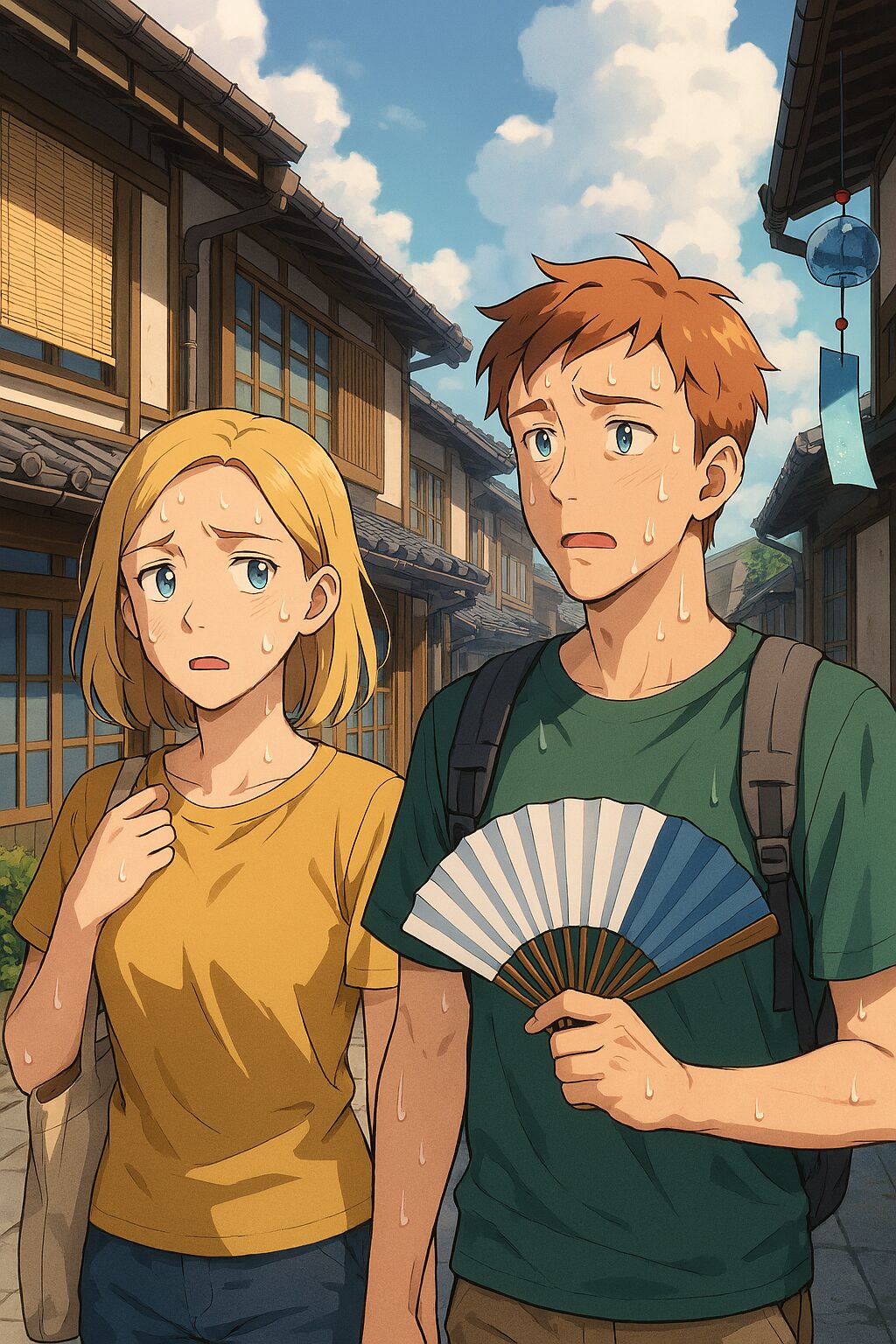- 🧭 Introduction: When Culture Meets Climate
- 🌡️ Understanding Humidity: The Invisible Force Behind Japan’s Summer
- 🇸🇪 Contrasts in Climate: Sweden’s Dry Air vs Japan’s Humid Embrace
- 🎐 Japanese Ways of Living With Humidity
- 🏮 Festivals in the Thick of It
- 🧳 Tips for First-Time Travelers: Staying Cool and Curious in Japan
- 🌸 Conclusion: Humidity as Cultural Texture
🧭 Introduction: When Culture Meets Climate
In August 2025, a Swedish couple visiting Kyoto shared their surprise: “We expected heat, but the humidity was truly overwhelming.” Spending one month traveling across Japan, they embraced the country’s history, food, and traditions—but the dense, sticky air of summer left an unforgettable impression.
What they experienced wasn’t just weather—it was a deep encounter with a hidden layer of Japanese life: humidity as a cultural element.
🌡️ Understanding Humidity: The Invisible Force Behind Japan’s Summer
➤ What is humidity?
Humidity refers to the moisture content in the air. When humidity levels rise above 70%, sweat doesn’t evaporate easily, making our bodies feel hotter and more fatigued.
➤ Why is Japan so humid?
Several geographical and cultural factors contribute:
- Surrounded by ocean and mountains, Japan traps moist air inland.
- The rainy season (called tsuyu) saturates the atmosphere.
- Urban architecture and heat-retaining infrastructure intensify discomfort.
- Traditional homes use materials like wood and tatami that respond differently to moisture.
Compare this to countries like Sweden, where dry summers and constant airflow make the same 30°C feel much more tolerable.
🇸🇪 Contrasts in Climate: Sweden’s Dry Air vs Japan’s Humid Embrace
Swedish summers average around 20–25°C with low humidity. The air is light and refreshing, allowing for long days outdoors without exhaustion. Saunas play a major role in Swedish life, encouraging intentional heat exposure followed by cool air or water.
In Japan, heat blends with moisture. It’s not just hot—it’s heavy. Understanding this difference is key to decoding the Japanese summer experience.
🎐 Japanese Ways of Living With Humidity
Rather than resisting humidity, Japanese culture has found elegant ways to coexist with it. Through aesthetics, habits, and sensory traditions, summer transforms from hardship into seasonal beauty.
➤ Cooling by sound
Fūrin (wind chimes) offer more than decoration—their delicate ring brings psychological relief. The concept is explored beautifully in this article.
➤ Visual ventilation
Bamboo screens (sudare) and water sprinkling (uchimizu) create shade and evaporative cooling. These are more than functional—they represent seasonal aesthetics rooted in hospitality.
➤ Hydrating with flavor
Nothing beats a chilled slice of watermelon (suika) in peak summer. It’s hydrating, refreshing, and symbolically tied to the season. Learn how watermelon defines Japanese summer culture here.
Other foods like cold noodles (sōmen) or hiyashi chūka show how temperature and texture influence comfort through the palate.
🏮 Festivals in the Thick of It
Bon dances, fireworks, and summer street markets happen during Japan’s most humid nights. People dress in traditional yukata, eat grilled corn and shaved ice, and carry folding fans. Despite the discomfort, these gatherings celebrate togetherness and nostalgia.
For deeper insights on the balance between Japan’s summer beauty and its challenges, explore this article.
🧳 Tips for First-Time Travelers: Staying Cool and Curious in Japan
If you’re visiting Japan from a dry climate like Sweden, here are essential strategies:
- Dress smart: Choose breathable fabrics like cotton or linen. Avoid dark colors that trap heat.
- Hydrate frequently: Electrolyte drinks can be lifesavers during long walks.
- Use accessories: Hats, umbrellas, hand towels, and portable fans are both practical and cultural.
- Timing matters: Avoid midday excursions. Early mornings and evenings offer relief.
- Find retreat spots: Temples, cafés, and riverbanks often provide shade and breeze.
Bonus tip: Accept the discomfort as part of the experience. Humidity in Japan isn’t just a climate condition—it’s a cultural initiation.
🌸 Conclusion: Humidity as Cultural Texture
Japan’s summer humidity teaches lessons in patience, adaptation, and beauty. It sharpens your senses, deepens your appreciation for seasonal rituals, and encourages thoughtful living.
For locals, it’s a fact of life. For visitors, it’s often a shock—but also a path to understanding Japanese resilience, mindfulness, and celebration of fleeting moments.
In embracing the humidity, you’re also embracing Japan.



コメント